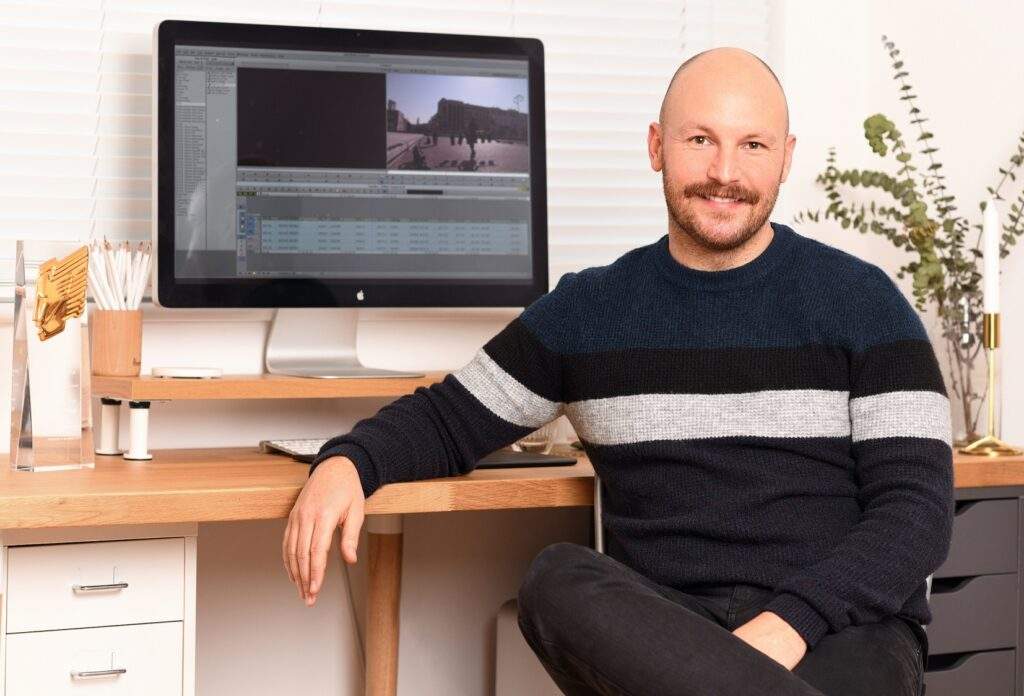
AGT; a title so well known that it immediately conjures mental images. America’s Got Talent is part of the Fremantle Media television dynasty that has left its imprint on nearly every corner of the globe. The “Got Talent” brand is about striving to manifest your dreams. That doesn’t only apply to those in front of the camera. AGT editor Malcolm Clarke was once a young boy in the small New Zealand town of Huntly who decided that he would make his way to a future in television and film; a dream that he achieved.
Following a prosperous early career in his home country, Clarke made his way to London where he became an editor on global phenomenon’s including The Voice (BAFTA Nominated) and Britain’s Got Talent (Winner of multiple BAFTA Awards). The incredible work he did on these led a path straight to Los Angeles where AGT co-executive producer Matt Banks offered Malcolm a position on the team.
NBC’s America’s Got Talent is enormously demanding of its editors as a live show with eclectic acts that averages ten million viewers per episode. The pressure and the opportunity for creativity is exactly what Malcolm imagined as a youth and he has proven to be a major asset to the production and the “Got Talent” brand.
Working on the multiple Primetime Emmy Nominated AGT is not something Malcolm takes lightly. While he’s had experience on some of the most popular and recognized productions of the UK, AGT provided the chance to test himself in a new setting and framed with the perspective of the American sensibility. His goal is always achieving an emotional moment that touches the viewing audience, a substantial feat when presenting performers that the audience has only just met and within a scant few minutes of time.
Mr. Clarke notes that he even studied the famed Meisner Technique (created by Sanford Meisner) and implements this in his editing to attain this goal. He relates, “The technique is based in emotional response, and we learned to pay close attention to how peoples’ behavior can communicate their real emotions. This skill enabled me to identify subtle changes in facial expressions, the minutiae of the performers, and focus on these tiny details to help tell their stories.” Malcolm also acjniwkedges that the need for brevity is often paramount.
He stipulates, “By far the most challenging edits of the series is always the live show recaps before the elimination episodes of America’s Got Talent. We call these the ‘story of the night’ cuts. Each editor is allocated two acts to recap, we feature a clip of their performance and also the judges’ comments. The very short sequence has to capture the tone and mood of their performance and the feeling in a very short space of time. There’s a famous quote by Mark Twain, ‘I apologize for such a long letter – I didn’t have time to write a short one.’
This really resonates with me and relates to editing as well I think because when you craft something that is super short – it often takes a lot more work. You have to make every second, every frame count. It has to say so much in a short space of time and a really well edited, short sequence is so very satisfying to watch.” Such season highlights as the Wildcats story VT, the AGT performance of the contestant called Ehrlich, and others testify to the transfixing nature of Malcolm’s editing.
When America’s Got Talent: Extreme premiered recently on NBC, it included Malcolm as an editor. Vetted by his exceptional contributions to AGT, Mr. Clarke was an essential addition to this new NBC show which expands the “Got Talent” franchise. True to its name AGT: Extreme provided a venue to air the performers who are too dangerous for the regular AGT. Fire, explosions, huge stunts, and massive staging are commonplace for this production. Editing personal stories about the competitors as well as their performances, Mr. Clarke embraces juxtaposing the grand scale of the staging and stunts against the intimate moments of reflections.
He informs, “In the main show, there might be a performer like a singer, or dancer and the energy required for the cut is less, because we are engaged by the talent. We’re listening and watching in a completely different way. The difference with extreme is that the stunts presented live are incredible feats of human courage and bravery. In contrast, when it comes to the interview segments, it’s hard to articulate what exactly feels like in terms of pace and tone; it’s partly driven by my experience and natural instinct for story.”
There’s no denying that Malcolm’s ability to recognize the disparate yet complementary emotions of a performance and an interview are vital to his work. There’s far more than technique involved here, though that is essential. It’s his emotional availability and willingness to investigate it as far as possible that allows him to unearth the connective tissue of these stories.
Even while working on one of the most well-known shows (AGT) in the world, Malcolm recognizes his own serene moment of reflection stating, “When I walked into the office in LA on my first day of working on AGT and was taken to the edit suite where I would be working and on the little screen outside the door was my name and AGT underneath it, seeing that reminded me of my own dream and that I had achieved what I set out to do as a boy.”
Writer: Coleman Haan